Ask Barney Anything: All Your Questions Answered
During a three-day Ask Me Anything forum Q&A, Barney Puttick offered many pearls of wisdom. Here's a round-up of the best
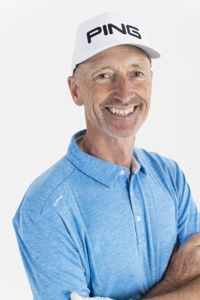
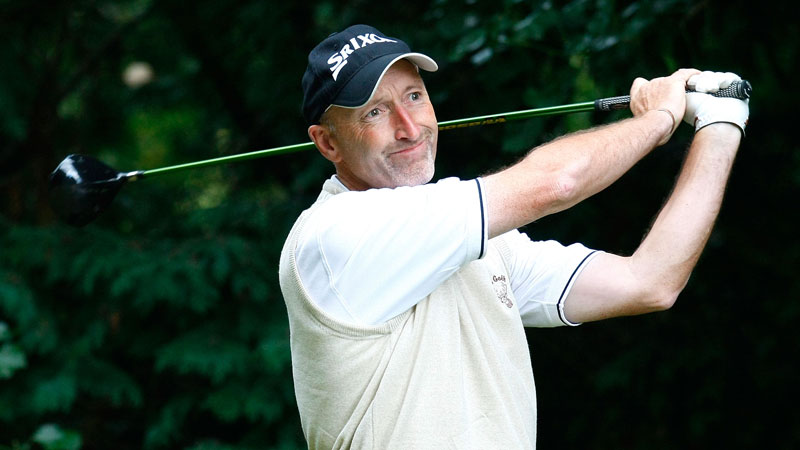
During a three-day Ask Me Anything forum Q&A, Barney Puttick offered many pearls of wisdom. Here's a round-up of the best
Ask Barney Anything: All Your Questions Answered
Barney Puttick is one of our valued Top 25 coaches and last week he gave our forum members the benefit of his encyclopaedic knowledge with a three-day Ask Me Anything session. They asked and Barney answered, and we all learnt plenty to help kickstart our season.
How has the golf swing changed over the last 35 years? Faldo V1 , Faldo V2, Daly, Tiger, Stack and tilt, x factor, George Gankas, Bryson. How have your teaching principles changed from then to now? sweaty sock
Barney says...
I think technology firstly in slow-motion camera and then Trackman have taken a great deal of the guesswork out of coaching. Clearly there are several styles however the substance of impact hasn't changed, so looking at even Bobby Jones or Sam Snead will give a golfer a great insight as to what is needed. I think the surprise for me is that had you asked me 20 years ago, I would have assumed that the swing especially at an elite level would have looked far more orthodox say in the Justin Rose style.
However, better teaching equipment means that the best coaches almost work from impact backwards, so a smart coach like George Gankas looked at Matthew Wolff as a teenager and thought, 'wow, this kid has got some strike' whereas possibly a few years earlier a less-informed coach would have looked at the quirky movement and thought, 'gosh there's some work here to sort this out'.
Subscribe to the Golf Monthly newsletter to stay up to date with all the latest tour news, equipment news, reviews, head-to-heads and buyer’s guides from our team of experienced experts.
I am sure some coaches would have wanted Dustin Johnson to get rid of his bowed left wrist, as that clearly was not in the textbook. For me there are still some principles I learnt from my old boss Ian Connelly (Faldo’s original coach) that I use today. Certainly the change for me is more focus on good impact factors and from a playing point of view doing more short game with students as this improves their scoring and ironically improves our impact!
How much does your dominant eye affect putting; alignment, stroke, and the putter head you should choose? JamesR
Barney says...
The stats say around 75 per cent of golfers are right-eye dominant and often the challenge is that the player can twist the stance open to allow the eye to see the target. A key bit of kit is a putting mirror and then you can work on getting your eyes level at address.
Related: PuttOut Home Studio Review
For left-eye dominant, like Tiger for instance, keeping the eyes level is probably easier. Generally I have found players evolve a stroke and clearly some are more of an arc whereas some favour a more straight-back straight-through look.
My suggestion is look at face-balanced putters first when choosing as I always think they have less margin for error, however there is trial and error in this part of the game!
I continually fight a tendency to align myself with my feet way right of target on full shots. I pick a spot in front of the ball, look up when in position and think I’m fine, but lay a club down and my feet... Any alignment tricks/techniques to prevent this please?! Curls
Barney says...
This is golf's most underrated fundamental and your tendency to aim right is very common. Picking a spot in front is a good starting point, however the problem for many players is that with their right-eye dominance they then line the feet up to the target rather than parallel to it. (Interestingly Jack Nicklaus, who invented the spot in front procedure when lining up, was left-eye dominant).
I encourage players to pick the spot as usual however grip the club in the left hand (most of us come in with the right ) and keep the feet pointing way left, then ease yourself square finally putting the right hand in position. Initial feel is one of pointing left of the target but with practice it will become normal. So many swing flaws I see come from poor alignment and the player making a compensating move to overcome it.
What is the most effective way for an amateur to lose the most handicap shots in the shortest time? chrisd
Barney says...
Sharpen up your short game. Start by working on your putting, especially the holing-out skills so setting up four tees around the hole with an uphill, a downhill, a right to left and a left-to-right putt and get to the point you can hole say 10/12 and you are just two shy of tour standard! Move onto chipping and pitching and book a lesson with your local professional to ensure your technique is on point.
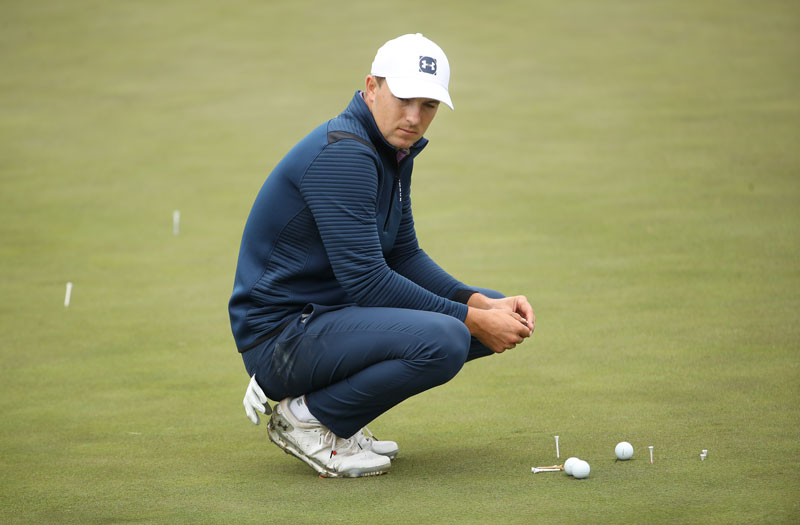
Should golfers try to get their wrist in a flat or even bowed position at top of backswing? richart
Barney says...
My feeling on the wrist at the top of the backswing does depend on the player’s physical make-up. So for example, Fred Couples has a relatively cupped position but in the all-important impact position he is solidly square. Generally for normal strength players bowed will cause problems with a shut clubface and I appreciate the World No. 1 does this but has incredible athletic ability to hold the face square through impact with his anti-left move through the ball. With a neutral grip, the face will usually offer a fairly flat left wrist at the top of the backswing, however the nitty gritty is a flat left wrist at impact!
At what point should a player start considering moving away from game-improvement irons towards muscle back forged irons? Bdill93
Barney says...
As a player’s skill level increases the desire of a more compact head does come into the golf pysche. Years ago it clearly was a choice of a shovel or a scalpel whereas now most companies have some terrific halfway house clubs that have help but look more playable and are of course workable. Often changing to this type of club, say like the Titleist AP2 or Ping I models, will actually mean a loss in distance but hopefully the increased shot making skills will outweigh that.
Related: Best Golf Blade Irons
It's tricky to give a handicap level on this as each player has different skills, so a visit firstly to a facility where you can try 5/6 models and then a conversation with a good clubfitter who can give you the numbers as to what they are producing and then take it from there.
What current pro would you like a lesson from and why? DRW
Barney says...
That would be Justin Rose, as I love his swing shape and effortless striking of the ball. He also seems a really nice chap and think he would be gentle with me and not tell me how bad my swing was!
What is the best drill to increase shoulder turn for a senior golfer lacking in flexibility. Following on because of a lack of shoulder turn, distance is reduced along with ‘coming over the top’? 3offTheTee
Barney says...
Certainly a challenge we face as we get older is a lack of flexibility and outside of golf drills I have found doing yoga to be of tremendous help in improving my flexibility. I would start with making sure my set-up is in alignment as it’s easy to become too hunched at address, with too much knee bend too, which arrests the turn.
Do a few simple turns with a club or tour stick across the shoulders and see how far the shoulders will comfortably go and that will give you a starting point. Then turning the club upside down or using the Tour stick do some swishes with either hand, then some with two as this is a great way of feeling fluidity of movement. Take that freedom into the swing and that improved coiling movement should reduce the over the top move on the forward swing. Oh and don't forget the cod liver oil!
Monty tells us that trying to 'find your game' immediately prior to going out for a round is a complete waste of time. He reckons we should just hit a couple of balls with a few clubs (or all of them) to warm up. Forget the idea of getting into the groove as you'll not find it if it isn't already there. Is he right? SwingsitlikeHogan
Barney says...
I think prior to the round the key is warming up and finding a feel for the day, so I think Monty is saying that trying to find perfection isn't a great idea. Loosening up on the full swing, strike some crisp short shots, then roll a few putts of say 25-40 feet as that’s likely to be the average length of what we will face on the opening greens. Finish off with a few short putts for confidence, then swagger to the tee like the great man!
How much of Tiger's success can be attributed to Steve Williams? And, in a similar vein, would Tiger have been equally successful had he had, for example, a Harry Diamond or a Helen Storey, on the bag? rksquire
Barney says...
I think with players the caddie they choose will depend on a series of things in terms of compatibility. So for Tiger, Steve Williams ticked the box of almost military-like persona given his father's background, strong attention to detail and experience of working with the very best on tour.
Related: Tiger Woods' Golf Gear Through The Years
I think Tiger would have been successful with a different caddie or caddies but in my opinion not as good. Each part of his game was analysed in depth so he knew what he was looking for in the right bagman to complement his incredible skill set.
Barney...you've just been hired by Rory...what first? Imurg
Barney says...
First point is to remind him he is without doubt one of the most talented people ever to pick up a golf club! So it always looks like his main issue is getting the club stuck behind him leading to that hooky one and in defending that a block creeps in too. Plenty of fade swings to soften transition, and then solidify those wedges and look at what Dustin has focused on rather than what Bryson has!
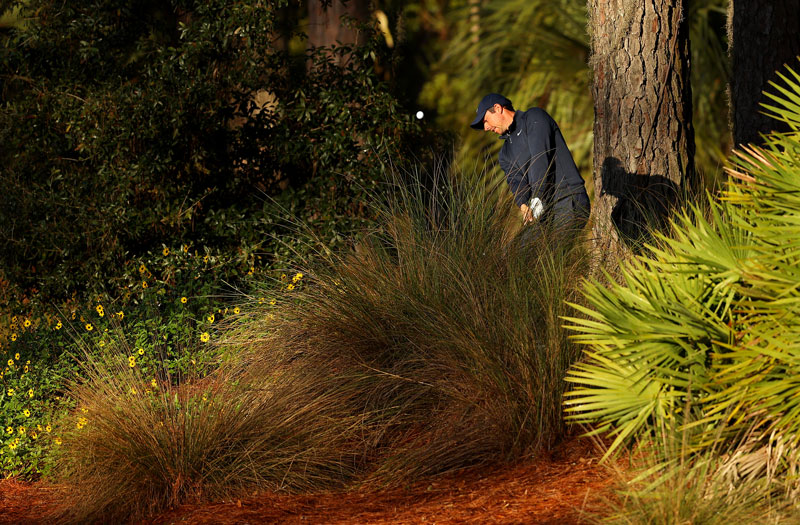
Finally, allow him to be mercurial as to me he is a streak player and he's on or not which is fine much like Seve was. His Masters collapse in 2011 was well documented, but it seems to be forgotten he won the very next major the US Open by eight shots.
How can I make my scoring far more erratic so that my handicap goes up and I’ll have more chance of winning a club comp? Being consistently good is so boring. I’ve been playing the same way for 50 years and I am ready for a change. Voyager EMH
Barney says...
Take a leaf out of Bryson's book and bulk up and hit the bejesus out of the ball and adopt his mantra of 'If I can see it I can hit it, if I can hit it I can hole it!' One of two things will happen and you will dominate the comps, or lose your swing down that particular rabbit hole and said handicap will go up and, voila, winning becomes easier.
When I’m pitching I have the landing spot clear in my mind. I’d say I’m decent from ~40 in. But when I’m on the tee if I think about a spot on the fairway (or the tree line in the distance that I’m aligned to) I steer it and all sorts can happen. If indeed it is better to not think about the target when driving what should I be thinking about? And if it is the target - how to I stop my subconscious from steering? Curls
Barney says...
Yes, swinging with freedom off the tee is a key skill to master and the dreaded steer does make us tentative and alter the clubface through impact. I like the idea of clear visualisation with the shot ending up in pole position in our mind's eye, but I do appreciate when faced with a tight tree-lined fairway the brain can go into 'let’s get it up there somewhere' mode and generally it doesn't end well.
Related: Best Drivers 2021
So a concept I use is to set a Tour stick around five yards ahead of the ball on the range and focus the player on hitting the shot straight over the stick or even trying to knock it out of the ground! This starts to change the thought to a positive release of the club and not a steering one. In fact, one of the pros I coach likes to put the other Tour stick on the ground on a straight line to the standing one and swing in his mind's eye along that.
So using the tried-and-tested method of picking a spot in front of the ball on the course and then focusing on hitting over that you will achieve the freedom you had in the drill. The other strategy I would encourage while you are building your confidence is, if you are feeling that tightening feeling on the tee, then go down a club maybe even two until you have something in your hands you can hit positively and as you put the ball in play more often the need to steer disappears.
Custom Fitting... worth it or a myth based on someone who is in the 10-15 handicap range? SteveW86
Barney says...
I think for all players it is worth looking into fitting. In my experience, acquiring the right lie angle is an overlooked fundamental as the amount of players I meet that could simply benefit from that alone is surprisingly high.
Certainly with the woods finding a suitable shaft to match your swing speed is a key component to improved scatter patterns. I think the problem is that the cost of new equipment can put players off from going along to a fitting. I must admit the premier companies like Ping, Callaway and Titleist do a grand job on their fitting days and there are some terrific club fitters around. The only disappointment is the lack of budget options with customisation available, although I have seen the Benross range and they have some good equipment pitched at what I thought was a good price to fill that hole in the market.
Related: Best Drivers For High Handicappers
So in summary if there is a charge for the fitting it is worth it, as you will leave with some first-class information courtesy of the amazing kit we now possess.
I am suffering from hitting everything out of the heel with my longer clubs, it's like I don't know where the clubface is? Albo
Barney says...
So there are a couple of things to check out if the shots are coming out of the heel. Firstly, check your stance as you could be crowding the ball so do a bit of mirror work and ensure you are in an athletic position, with the weight evenly distributed in the feet.
During the shot it could well be that your weight is moving towards the ball on your through swing, bringing the heel of the club more towards the ball. This often comes from the player becoming too 'ball bound' and a good tip is to hit a few shots on the range with the club addressing the ball 6-8 inches away rather than in its normal position next to it.
By doing this I've found players focus on sweeping through and 'collecting' the ball rather than tightening the muscles as we hit at it. If you YouTube the legendary Moe Norman he actually hit all of his shots from this position.
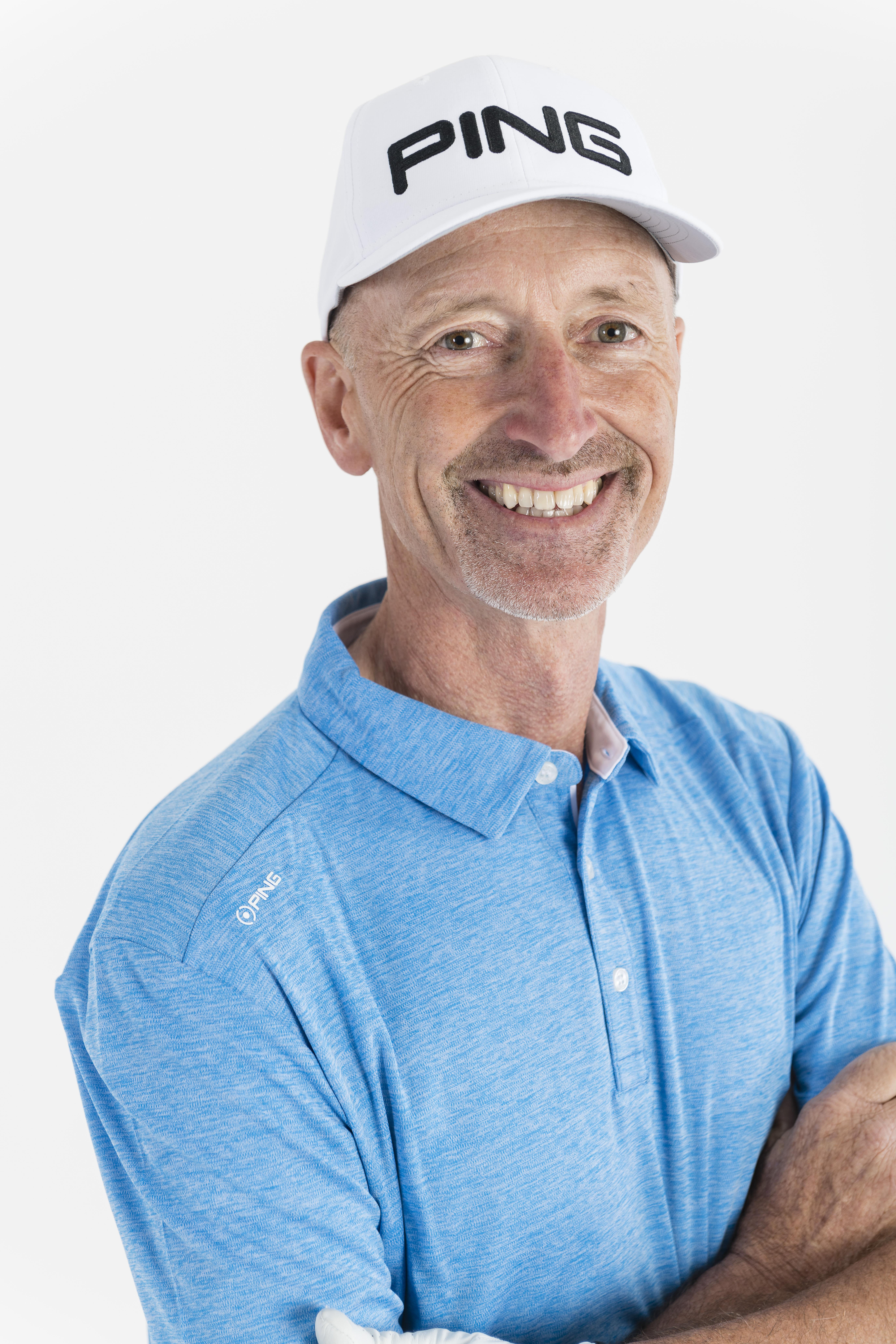
Location: Mid Herts Golf Club
Barney turned professional in 1979 and gained the Assistant Professional position at Dyrham Park Golf Club. He played full time before becoming Head Professional at Ramsey Golf Club in 1987. He can now be found teaching at Mid Herts Golf Club. Barney's favourite golfing memory is tying Greg Norman for third place in a 36-hole tournament in Cannes.
Teaching philosophy:
My goal with every student is to work with the player and what they possess rather than impose a prescriptive style for everyone. The key, for me, is improving players' fundamentals and their impact factors, and setting of that all important chain of events of one good move leading to another.
Typical lesson:
Technology makes it possible for everyone to see their swing and get their numbers. My job is to unravel them and give the player a positive set of ideas to take away after the session. Using swing drills and drawing sporting comparisons to the swing - for example, throwing a ball - the player can improve quite quickly once they put these into practice.
Significant influences:
I was fortunate to spend my formative years working for Ian Connelly, Nick Faldo's early mentor. He instilled in me the love of the art form that is coaching, and I still use some of his ideas to this day. Latterly, I enjoyed Bobby Clampett's ideas on the swing, as he was a phenomenal player with a quirky action. His ideas on impact have aligned to my teaching. I have also been blessed to spend time with Mike Bender, Zach Johnson's long time coach.